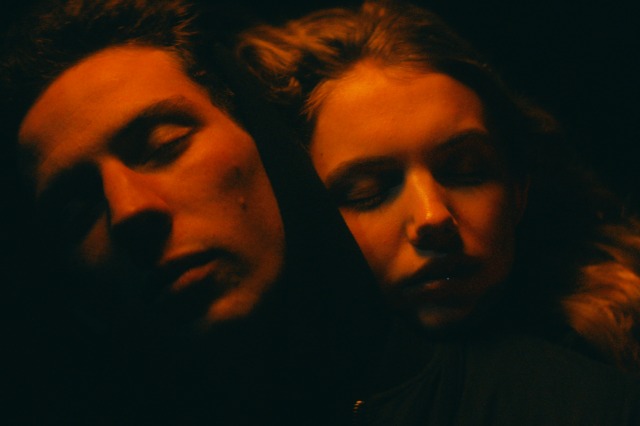'Bridgend' Film Portrays Mystery Wave Of Suicides With Stylish Detachment
By Joel Wicklund in Arts & Entertainment on Feb 10, 2016 7:27PM

Josh O’Connor and Hannah Murray in "Bridgend." (Photo: © KimStim, 2015.)
It's a tall order for any filmmaker to capture a psychological enigma like mass self-annihilation, and it's clear from interviews that writer-director Jeppe Rønde wanted to treat the wave of suicides in or near the Welsh town of Bridgend with sensitivity. Despite those intentions, however, the movie Bridgend feels like designer despair—portraying its multiple tragedies with resigned, stylish detachment.
The troubling true story of the Bridgend suicides is ongoing. Though an initial series of some 25 suicides between 2007 and 2009 involved teens and young adults connected as friends or acquaintances, the deaths have continued and spread beyond those circles. Depending on what source you check, there have been 79 to 100 suicides in the area over the last eight years—a startling number considering the relatively small population. That most of the people who ended their lives were young makes the statistics even more haunting.
Though drawn from Rønde's research on the actual events, the movie uses fictional composites to represent real-life figures. We enter the downward spiral through newcomer Sara (Hannah Murray from Game of Thrones and Skins), whose policeman father is investigating some of the recent suicides. Meanwhile, Sara is drawn into a large, close-knit group that parties and skinny-dips at a nearby lake. Their outdoor gatherings include communal howls of anguish, with participants screaming out the names of friends who have recently chosen a final exit.
There is an unquestioning acceptance of the suicides among the clan, with members largely unwilling to speculate on reasons or even talk much about the deaths beyond vague, inarticulate spiritualism. Even a blossoming romance between Sara and the local vicar's son can't dent the group's armor of silence. The suicides continue and the frustrated mix of anger and mourning among parents and authorities grows as no motivation becomes clear.

Scene from "Bridgend." (Photo: © KimStim, 2015.)
Rønde wants the viewer to feel that frustration too, and he deserves credit for not trying to provide answers to a horrible riddle still bewildering many of those closest to it. A Danish documentarian making his first dramatic feature, Rønde also avoids turning the movie into a topical melodrama. There are emotionally explosive moments, but he maintains an observational eye.
The story does touch on possible contributing factors to the suicides. The communication gap between parents and kids in the area seems especially wide. There is an unhealthy mixture of sexual aggression and emotional impotence among the boys in the group that the few girls seem to mistake for moody romanticism. And yes, the glowing screens of internet isolation come to the fore via an online memorial site.
Thankfully, Rønde doesn't use any of these factors to explain away the mystery, nor does he act as "cheap philosopher," as the writer John Bloom described it in a beautifully written essay on a friend's suicide. Still, as intent on a dispassionate portrayal as the director seems to be, his lovingly shot, evocative imagery gives the film an almost gloomy glamor.
Shots of kids swinging across a railway tunnel on a rope in the lights of a quickly approaching train, or floating like painterly corpses in the lake, have an undeniable allure but fail to further illuminate characters or even alter the mood of the movie very much. These images are striking, but in the context of the story seem disconcertingly superficial. You could imagine them as album covers or fashion magazine advertising spreads.
Suicide clusters are not exclusive to this era or Western culture, but they are a dismaying phenomenon relevant to today's darker social currents. While not as ominously frequent as the traumatic Bridgend toll, copycat suicides—like school shootings—often seem common enough to make one feel a sickness is simply in the air. Bridgend may be trying to do no more than convey that feeling. On that basic level, it succeeds.
Still, you're left wishing the movie had risked a little more emotional involvement. For all its carefully crafted moodiness, nothing else in the film equals the heartbreaking impact of an opening scene where a dog comes across a teenager hanging lifeless in the woods. With a few simple gestures and one quiet whine, this canine actor embodies more humanity than everything that follows.
Bridgend. Directed by Jeppe Rønde. Written by Rønde, Torben Bech and Peter Asmussen. Starring Hannah Murray, Josh O'Connor and Steven Waddington. 104 mins. No MPAA rating.
Opens Friday, Feb. 12 at Facets Cinémathèque.